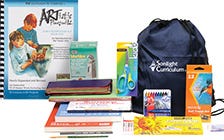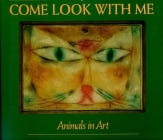Homeschool Art Curriculum
Sonlight offers a variety of art products for students to enjoy, from art appreciation books to art skills programs that will teach your children how to draw, paint, sculpt, and more.

Homeschool Arts Curriculum & Crafts Materials

ARTistic Pursuits
Excellent art program for early elementary school through high school, offering a constant expansion of artistic knowledge and skill. Teaches elements of art, composition, art history, art media, and more.

NOYO Crayons
Designed for little hands with big imaginations! Water-based, non-toxic, silky crayons.

Coloring Books
Browse our collection of educational history coloring books and coloring with sticker books.
More Great Art Books, Materials & Supplies
Additional Information
Why Art is Important
A homeschool art curriculum is important in the development of all children. Here's why...
- Art is a link to the past. It provides an enjoyable perspective from which to examine history.
- Art helps students to understand and empathize with other people.
- Art encourages imagination. It shows students how they might express their own feelings and experiences through painting and drawing.
- Art provides children an opportunity to create and do, which can be a refreshing break from studying.
- Art teaches students how to interpret different forms of communication, like symbolism, metaphor, and the meanings of color.
- Art improves academic achievement. Evidence suggests that students who actively participate in some form of art—whether it be painting, acting, music, etc.—perform better in other subjects than students who don't participate in art.





